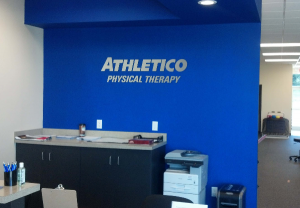
Department of Labor Bureau of Labor Statistics, the demand for sonographers will continue to grow much faster than average for all occupations through 2026. Currently there are job openings throughout the country.

Sonographers work in hospitals, physician offices, and medical and diagnostic laboratories. To remain registered, they must earn continuing education credits. To become registered, students must complete an accredited educational program and pass national certifying examinations. Sonographers are educated in anatomy and pathophysiology, patient positioning, examination techniques, equipment protocols, and basic patient care and safety. Diagnostic medical sonographers evaluate abdominal structures like the kidney, liver, and spleen, breast tissue, the reproductive system, blood vessels, fetal development, and musculoskeletal structures like tendons and joints. Echocardiographers, also known as cardiac sonographers, evaluate the anatomy and hemodynamics (blood flow) of the heart, its chambers and valves, and related blood vessels. Two options for NDSU students interested in sonography are echocardiography and diagnostic medical sonography. They have a high level of patient interaction and play a vital role in providing the physician with quality images to interpret, assess, and diagnose medical conditions or conduct surgical procedures. Sonographers use special equipment and high frequency sound waves (ultrasound) to obtain images of internal body structures and organs. Mean annual earnings for radiologic technologists in 2021 was $66,490 ( Radiologic and MRI Technologists : Occupational Outlook Handbook: : U.S. An increase in medical conditions among the aging baby-boom population will require imaging as a tool to making diagnoses. Department of Labor Bureau of Labor Statistics, employment of radiologic technologists is expected to grow faster than average for all occupations through 2026. Radiation therapy, sonography, and nuclear medicine typically require additional specialized formal education in a dedicated training program. With experience and additional training, general radiographers may become specialists in CT, magnetic resonance imaging, mammography, interventional radiography, or advance into management or education. Multi-skilled RT(R)s who are educated and credentialed in more than one type of imaging technique are most marketable. Radiologic technologists work in hospitals, physician offices and clinics, or diagnostic imaging centers. To become a registered radiologic technologist, RT(R), students must complete an accredited educational program, earn an academic degree, and pass a national certification examination. Radiologic technologists are educated in anatomy, patient positioning, examination techniques, equipment protocols, radiation safety, radiation protection and basic patient care. They work closely with radiologists, the physicians who interpret medical images, to diagnose or rule out disease or injury.

Radiographers, also known as radiologic technologists, perform diagnostic imaging examinations, accurately position patients, obtain quality diagnostic images, and adhere to radiation protection regulations for themselves, their patients, and coworkers. Three unique and specialized internships available to RS majors are radiography, diagnostic medical sonography, and echocardiography.

Radiologic Sciences at North Dakota State University combines foundational science, math, and general education courses on campus with applied imaging classroom, lab, and clinical education during a two-year full-time internship within an affiliated hospital.


 0 kommentar(er)
0 kommentar(er)
